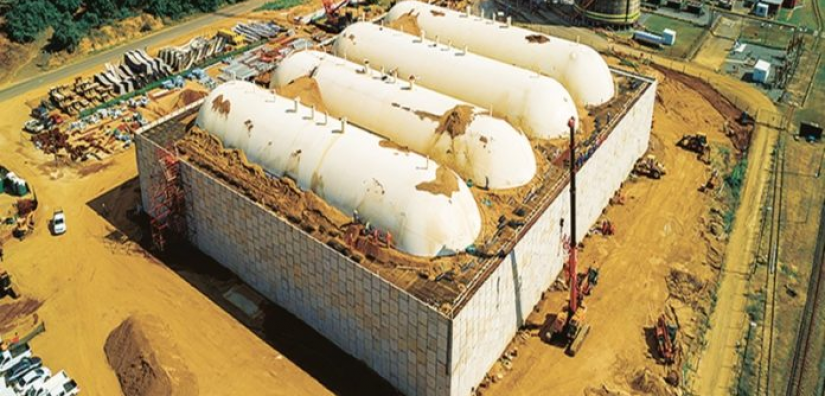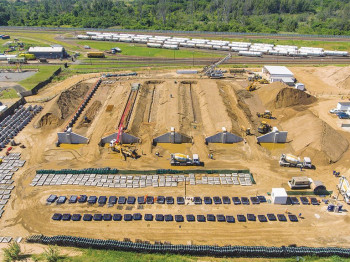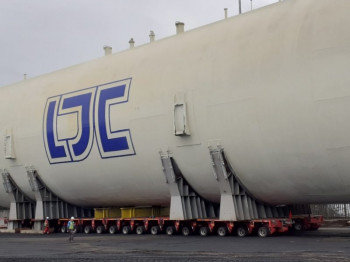Level Best

Construction of the world’s four largest Liquified Petroleum Gas (LPG) storage tanks presented a formidable engineering challenge. Each tank, weighing 5650 tonnes and measuring 60 metres in length with a 16-metre diameter, was founded on an immense piled raft. Minimising the differential settlement across the raft was of critical importance, as the massive tanks were highly sensitive to distortions that could compromise their structural integrity.
To address this challenge, a sophisticated 3D Finite Element Analysis (FEA) model was meticulously crafted, encompassing the tanks, the mound in which they were buried, and the colossal, piled raft beneath. The model’s accuracy and reliability were ensured through rigorous validation, involving on-site pile load tests. Individual pile lengths were scrupulously adjusted based on the FEA predictions, aiming for near-uniform settlement across the foundation.
By employing cutting-edge modelling techniques and on-site validation, the project successfully mitigated the risk of differential settlement, ensuring the stability and longevity of these storage tanks.
Highlights
-
FEA back-analysis of pile load tests undertaken on site.
-
Creation of 3D FEA model of the tanks, mound, piled raft and supporting soil.
-
Simulation of construction, tank hydrotesting and operation.
-
Optimisation of individual pile lengths to create a near-uniform settlement of the raft.
-
Distortion of the LPG tanks minimised for their safe operation.

